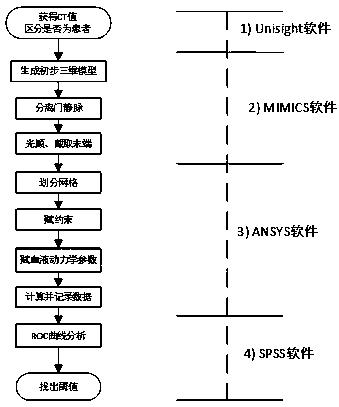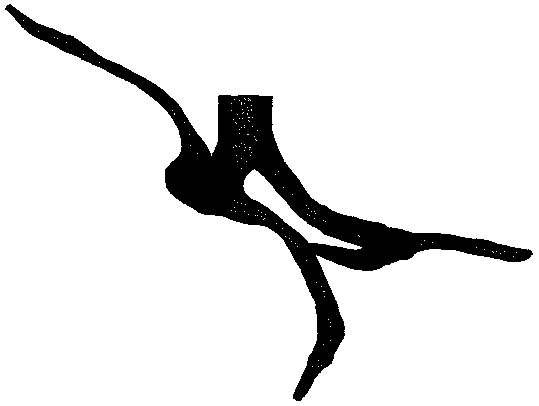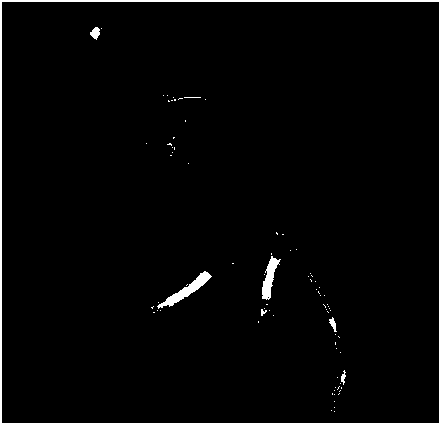Non-invasive portal vein pressure gradient measurement method based on medical image
A portal vein pressure and medical image technology, applied in the field of non-invasive portal vein pressure gradient measurement, can solve the problem that the red blood cell deformability changes the portal vein resistance and hemodynamic indexes, the portal vein branch model has not been established, the pressure and velocity change, and the portal vein pressure relationship is inconsistent. Completely parallel and other problems, to achieve low cost, easy to implement, good effect
- Summary
- Abstract
- Description
- Claims
- Application Information
AI Technical Summary
Problems solved by technology
Method used
Image
Examples
Embodiment Construction
[0052] Attached below figure 1 The preferred embodiments of the present invention are described in detail.
[0053] 1. Find the required CT images in the Unisight software, integrate all the CT sequences of the subject into a DICOM file, and then distinguish whether there is portal hypertension according to the clinical conditions.
[0054] 2. Do corresponding processing in MIMICS software.
[0055] 1) Generate a corresponding preliminary three-dimensional model according to the CT;
[0056] 2) Because there is a difference between the inherent CT values of the hepatic portal vein and the surrounding tissue, adjust the appropriate threshold range, separate the blood vessels from the surrounding soft tissue, and separate the hepatic portal vein model of "one main trunk - four branches" from the overall model;
[0057] 3) Since the initially obtained hepatic portal vein model has the problem of uneven surface and cannot accurately reflect the actual vascular anatomy of the ...
PUM
 Login to View More
Login to View More Abstract
Description
Claims
Application Information
 Login to View More
Login to View More - R&D
- Intellectual Property
- Life Sciences
- Materials
- Tech Scout
- Unparalleled Data Quality
- Higher Quality Content
- 60% Fewer Hallucinations
Browse by: Latest US Patents, China's latest patents, Technical Efficacy Thesaurus, Application Domain, Technology Topic, Popular Technical Reports.
© 2025 PatSnap. All rights reserved.Legal|Privacy policy|Modern Slavery Act Transparency Statement|Sitemap|About US| Contact US: help@patsnap.com



